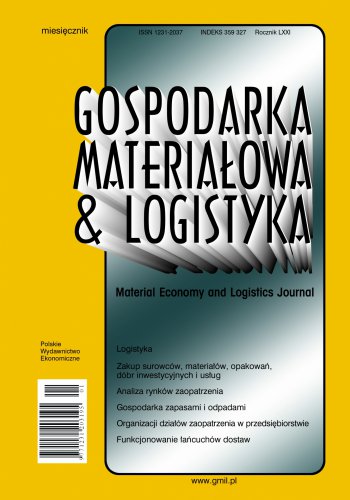Firms are permanently looking for ways leading to the competitive advantage creation. The concept of logistics plays an important role in the process of building such an advantage. The evolution of the logistics concept shows that firms are increasingly focused on the supply chains formation and development, including the key importance of the logistics processes in supply chain.
One of the types of supply chains that deserve the special attention are the short supply chains, playing a significant role in the agri-food sector. It is in this sector that the fast time of product delivery to the end customer is often of the utmost importance. It ensures that the needs and expectations of customers are met. It also enables tangible benefits to be achieved by producers and suppliers.
The aim of the article is to identify the most important premises and symptoms of the logistics concept impact on the development of short supply chains in the agri-food sector. The article is of a conceptual nature. Firstly, the nature of logistics as the concept of the goods and information flow management, as well as the logistics concept development were presented. Then the article presents the essence and significance of the short supply chains, bearing in mind the most important characteristics of the agri-food sector. The last part of the article comprises premises and symptoms of the logistics concept impact on the short supply chains development.
Keywords: logistics concept; supply chain; short supply chain; agri-food sector

